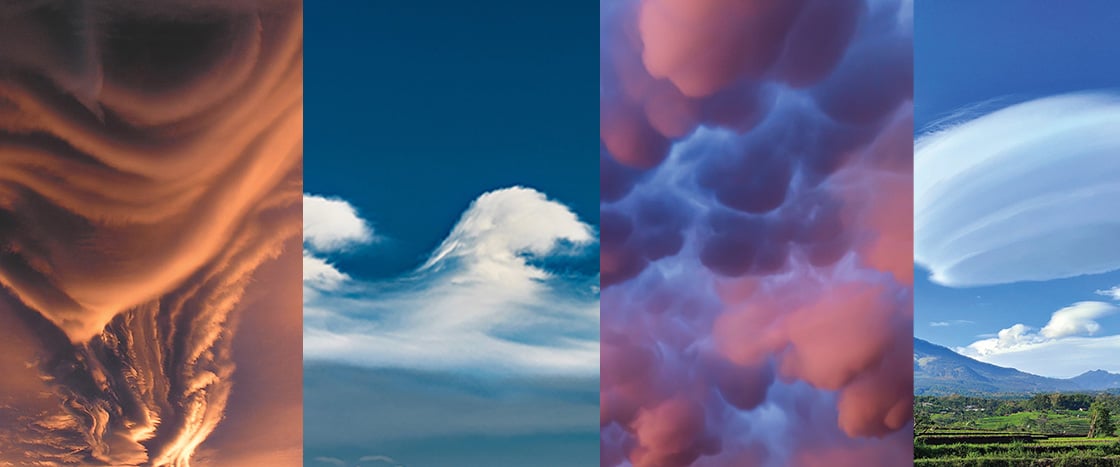Clouds can be white and wispy—or gray and lumpy. They might look like a puppy, a castle, or even a UFO! Did you know the shape of a cloud holds clues about what’s happening in the sky?
Clouds form when water evaporates, or turns into a gas called water vapor. This gas floats up into the atmosphere. There, cool temperatures turn water vapor into liquid droplets in a process called condensation. Tiny particles like dust help these droplets form. When many drops come together, they form a cloud! (See diagram below.)
Scientists group clouds into four main types. Cumulus clouds are tall and fluffy. Cirrus clouds look wispy and form high in the sky. Stratus clouds are wide and flat. Nimbus clouds look dark and create rain or snow.
“But some clouds are so rare, they get special names,” says Flor Vanessa Maciel. She’s a scientist who studies clouds at the University of California, Los Angeles. Read on to learn more about some of these strange-looking clouds and what they tell us about the weather.

